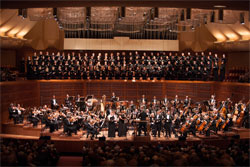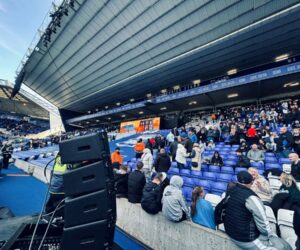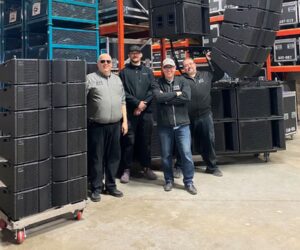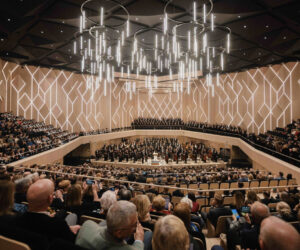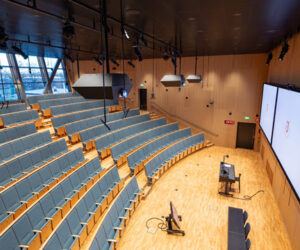Completed in 1824, Symphony No. 9 in D minor, Op. 125 (also known as “the Choral”), is the final complete symphony of Ludwig van Beethoven.
For a new recording featuring the San Francisco Symphony & Chorus—conducted by Michael Tilson Thomas—on the SFS Media label, Beethoven’s 9th is once again in the classical music connoisseur’s spotlight and, to ensure the most pristine vocal performances, ribbon microphones from Burbank, CA-based Royer Labs featured prominently in the recording process.
San Francisco-based Jack Vad serves as the producer / engineer for the San Francisco Symphony.
With a pedigree that includes over 200 commercial classical releases for prominent labels including BMG Classics, Nonesuch Records, New Albion Records, and Koch International—not to mention the SFS Media recording of “John Adams: Harmonielehre & Short Ride In A Fast Machine” that won a Grammy Award in 2012—Vad certainly understands what it takes to best capture a musical performance.
He used seven Royer Labs SF-2 Mono Ribbon microphones with Royer’s critically acclaimed Slingshock microphone mounts during the recording of Beethoven’s 9th.
“Obtaining the best possible vocal tracks starts with quality microphones and good positioning,” Vad reports. “For comparison purposes, each of the four soloists had a dual, semi-coincident microphone setup that included one Royer SF-2 and one conventional small diaphragm condenser microphone.
“The height of each microphone array was adjusted so that the capsules could ‘see’ the soloists above their handheld music scores.”
The process of comparing a small diaphragm microphone and a ribbon microphone yielded some very interesting results, as Vad pointed out. He noted two main differences between these microphones; the Royer SF-2 had the most natural mids and highs without any exaggeration of sibilance or attacks. Additionally, the warm quality of the SF-2 presentation enabled the voices to better integrate into the musical texture, which really helped create a superior mix.
“I find the most notable characteristics of the Royer SF-2 to be its warmth and its ability to blend into the greater whole of a musical performance,” Vad explains. “Equally important, the microphone’s lack of high frequency resonances allows for a very natural pickup—with a uniform, uncolored off-axis response.
“The end result is, musically, very pleasing. Given these qualities, I also consider the SF-2 a solid choice for use on orchestral piano, solo piano, concerto piano, section strings, solo bass, vocals, and harp.”
“The Royer SF-2 is one of the most significant acquisitions that the San Francisco Symphony has recently made for its microphone inventory,” he adds. “Over the last two years, we’ve been extremely happy with both the microphone’s versatility and sound quality. The Royer SF-2 is an essential part of the San Francisco Symphony’s recorded sound.”


